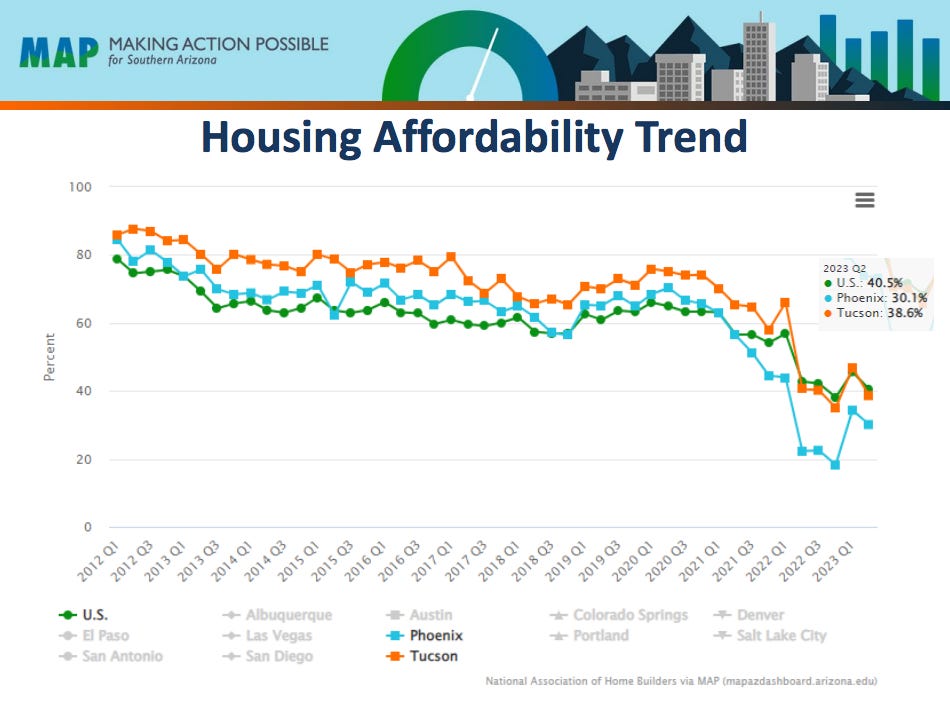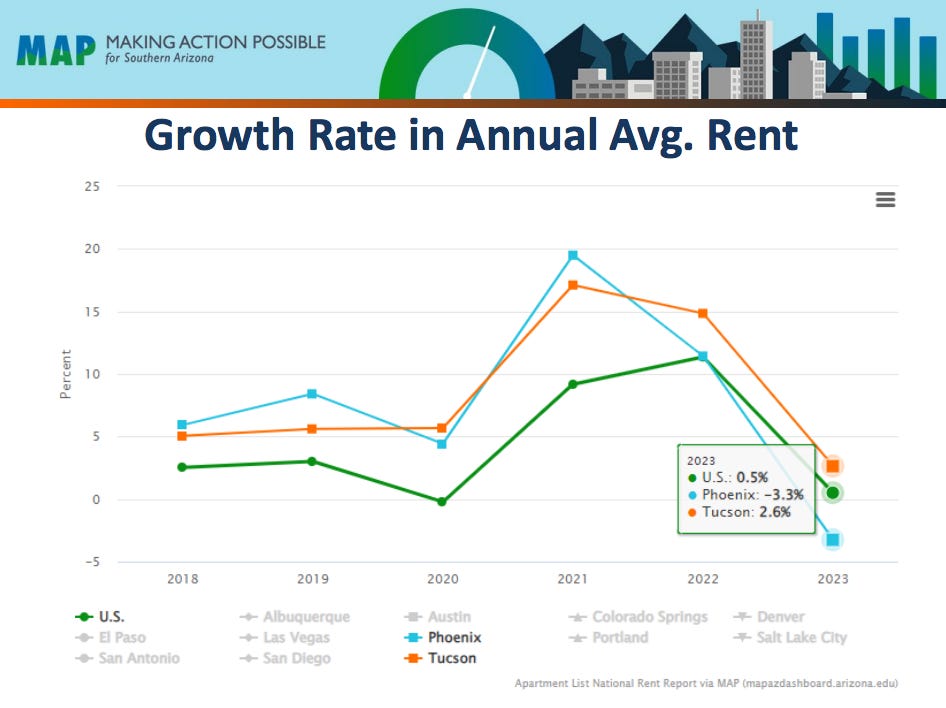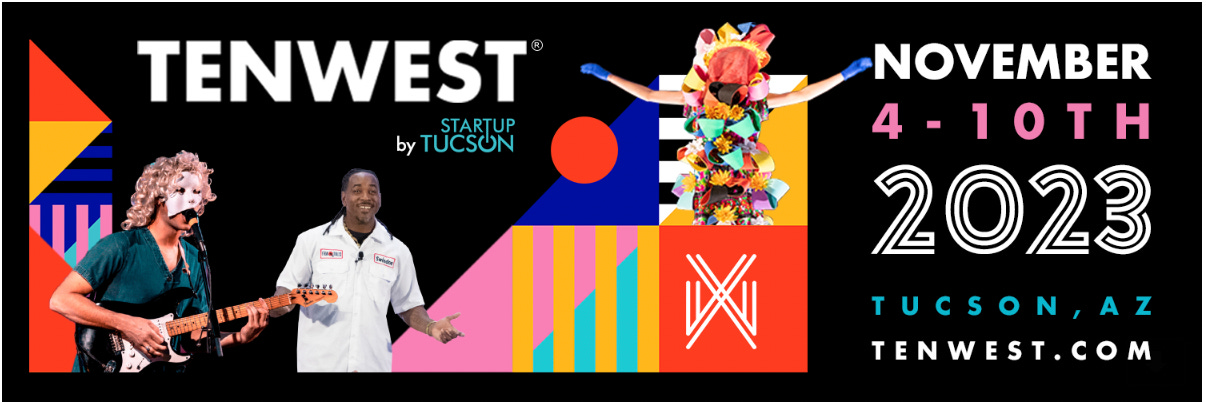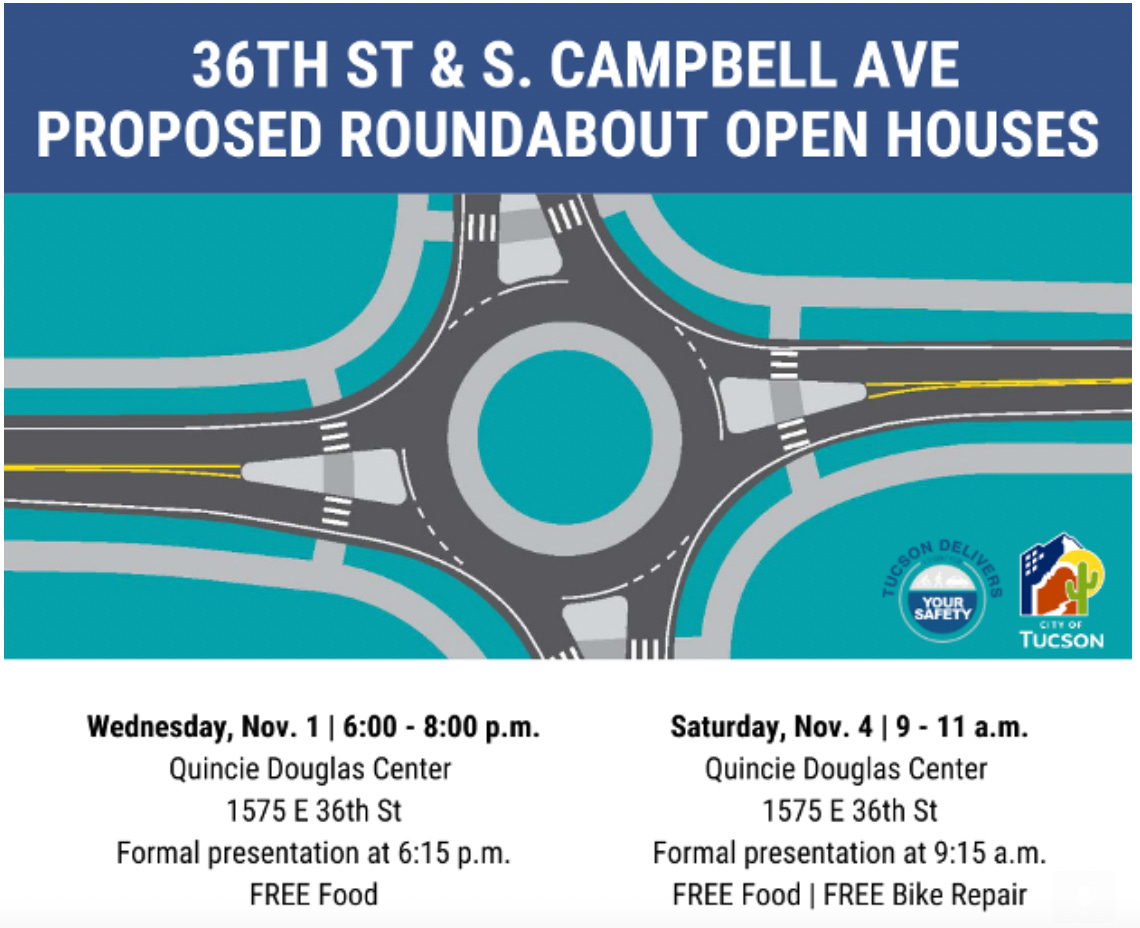The Daily Agenda: How to sound like a genius
UA researchers have the data to make you sound smart... Housing prices, the economy, you name it ... Fentanyl now public health crisis in Tucson.
The housing situation in Tucson is terrible. We hear about it all the time. There aren’t enough houses. Rents are going up. Homelessness is surging.
It gets repeated so much that it’s tempting to take it all for granted, without really knowing the details. Think about it for a second. Do you know how many people in Tucson have a hard time paying for housing? Neither did we.
Luckily, we have people in Tucson who track that kind of thing. The Eller College of Management at the University of Arizona compiles data on local housing and a ton of other economic stuff on their Making Action Possible dashboards.
These dashboards are great tools for understanding the local economy. They’re in tune with issues that need attention and they make the data understandable to regular people, which we always appreciate.
So let’s say a friend asked you how bad the housing situation is in Tucson compared to other cities.
The MAP researchers have you covered. They picked a batch of cities in the West for comparison with Tucson: El Paso, Albuquerque, San Antonio, Colorado Springs, Las Vegas, Phoenix, Austin, Salt Lake City, Portland, and Denver.
Houses in Tucson aren’t as expensive as they are in most of those cities. The median home price in Tucson in 2022 was $372,000, only higher than El Paso, Albuquerque and San Antonio. On the other end of the scale, the median price is $670,000 in Denver and an ungodly $911,000 in San Diego.
But the local home prices are still more than most Tucsonans can afford. About 39% of the Tucson homes sold in early 2023 would be affordable to somebody making the median income. That’s a big drop from 64% in 2021.
What about if you rent? The average rent for a one- or two-bedroom apartment in Tucson is about $1,350 this year. Again, that’s higher than in El Paso, Albuquerque and San Antonio, while Denver was near the highest at $1,740 and San Diego was off the charts at $2,400.
There is some good news about rent, though, Jennifer Pullen, senior research economist and program coordinator for MAP, said in a recent webinar. Rents are high in Tucson, but they aren’t rising much right now.
The problem is rent spiked in 2021 by nearly 18%, followed by another spike of 15% in 2022. But that’s slowed down now and rents are going up by just 2.6%.
What about how hard it is for people to cover rent or mortgages costs?
Tucson is better than most of the other cities, but none of them are in particularly good shape. About one-third of Tucsonans spent more than 30% of their income on housing in 2021. That’s similar to Albuquerque and San Antonio. San Diego is the worst, with residents spending more than 40% of their income on housing.
All of this is just scratching the surface. MAP researchers compiled data on a ton of other topics, such as local poverty rates and educational attainment. They’re all worth a look.
So, next time your friend from Phoenix, Michigan, or even Tucson asks you about Tucson’s economy, just pull up the MAP page. You’ll sound like a genius.
Seeking solutions: Pima County has received a $12.5 million grant from the CDC to combat the opioid epidemic, and another $48.5 million from a settlement agreement with opioid distributors is on its way. But local experts say that this isn’t a problem we can buy our way out of, the Arizona Daily Star’s Nicole Ludden reports. There have been 222 fatal overdoses involving opioids so far this year, but with fewer opioid users opting to receive treatment over going to jail, along with pressure from the community, officials are struggling to find new ways to address the problem.
Food fiasco: The University of Arizona’s new mandatory meal plan, which requires all first-year students be automatically enrolled in a meal plan that costs $5,090 per year, is raising concerns about its impact on students facing financial insecurity, the Daily Wildcat’s Sabina Hernandez writes. Freshmen are not allowed to opt out of the plan and other students who aren’t required to have it are struggling to navigate the refund system.
Lawn games: About 95% of the UA’s many lawns are watered with reclaimed water, adding up to about 70 million gallons last year alone, El Inde Arizona’s Riley Brown reports. But using reclaimed water doesn’t address all the negative effects lawns can have on the environment, according to a 2011 study by the Ecological Society of America, which shows that grass lawns in the Sonoran Desert may be taking a toll on native animal species.
Driver beware: While crime has taken center stage in this year’s city election, people should be paying more attention to traffic safety based on data alone, the Star’s Tim Steller writes. Police have recorded 82 traffic-related deaths within city limits this year, with 24 pedestrian fatalities, 18 motorcyclists and six bicyclists. That’s nine more than this time last year, when pedestrian deaths led the numbers. This year, drivers are leading the pack, with 24 drivers killed in motor vehicle collisions, and these numbers don’t include the many fatal crashes that have taken place outside city limits.
Tuition transparency: The UA is looking to move to a more intuitive and predictable tuition and fee structure, in order to help students better understand the financial commitment of attending the school, UA News reports. If approved by the Arizona Board of Regents, the new structure will go into effect in the 2024-25 academic year. The school is also taking steps that don’t involve board approval, including making the cost of a single credit hour more affordable for part-time students and reducing the program fee for graduate students seeking a certificate from the college of public health from $250 per credit to $75 per credit.
Years in the making: The Town of Marana broke ground on its community and aquatic center earlier this month, following more than six years of planning, Tucson Local Media’s Karen Schaffner writes. The new 61,000-square-foot facility will include a 10-lane, 25-meter swimming pool; a second pool with zero-depth entry and a resistance channel for walking; a place for teens to gather; basketball, pickleball and volleyball courts; a community room; fitness center; child watch room; and a three-lane, one-tenth-mile indoor walking track.
8.2: The percentage growth in new businesses with employees in the Tucson area in 2022.












I tend to give the UA a pass in my mind when it comes to their lawns, given that they have to compete for students from out of state. I've heard of a lot of grass lawn alternatives, like dwarf carpet of stars (a succulent!) or clover. It would be kinda cool to see the UA set an example on cool lawn alternatives, even if it were just in a few specific spots on campus!